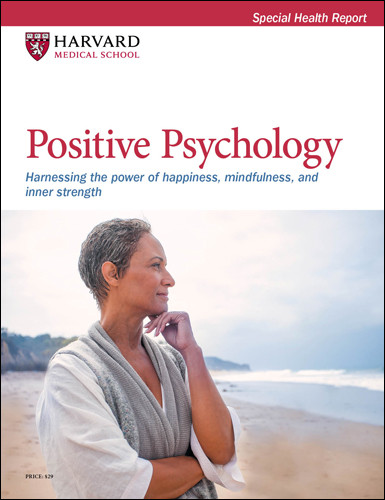Steps to spot the signs of hoarding
What's normal and what isn't? Learn to identify this mental health disorder, which has serious risks.
- Reviewed by Anthony L. Komaroff, MD, Editor in Chief, Harvard Health Letter; Editorial Advisory Board Member, Harvard Health Publishing

Let's start with a little story: When Ann turned 66 last year, she began stockpiling plastic food containers. This initially made sense to her husband, since there never seemed to be a container available to store dinner leftovers. A year later, however, containers are spilling out of cabinets and closets and piling up in the laundry room. In addition to containers, Ann has started a collection of paper bags. And Ann's husband is concerned she might have a condition called hoarding disorder. He could be right.
What is hoarding disorder?
Hoarding disorder is a mental health condition characterized by an inability to discard certain belongings to the point of unhealthy accumulation.
While the types of hoarded items vary and might be useless to others — old clothes, boxes, papers, junk mail, or even spoiled food or garbage — the person hoarding the items is convinced they'll be needed one day. The mere idea of parting with them is extremely distressing. In time, stuff fills the home in mounds of disorganized clutter that jams rooms and hallways, impairs daily function, and threatens safety.
"There might be clutter blocking the stove so you can't prepare meals, or blocking the door so you can't get to work or get out in an emergency," says Dr. Stephanie Collier, a psychiatrist at Harvard-affiliated McLean Hospital.
What causes hoarding?
It's unclear what causes hoarding disorder. It typically develops in the teen years, but can also show up in older age, possibly because hoarding is associated with certain mental health conditions. These include anxiety, dementia, obsessive compulsive disorder (OCD), depression, and attention deficit hyperactivity disorder (ADHD). Features of those conditions sometimes trigger hoarding behavior.
"For example, people with anxiety disorder might worry excessively that they will run out of a particular object they're going to need. Building up a supply gives them a sense of control," Dr. Collier says. "People with OCD might have thoughts that won't go away about needing objects in certain amounts. They continually feel compelled to keep the objects, even though they don't want to."
Other examples: People with ADHD might have difficulty prioritizing what to throw out. And people with cognitive decline might be afraid to let go of certain items, such as bills, because they can't remember if they need them.
Identifying hoarding signs
Signs of hoarding disorder develop gradually, making it hard to pick up on them until belongings accumulate. After all, maybe someone just wants to be prepared with supplies. How can you tell the difference between normal and abnormal accumulation?
First, look for overkill. It's normal if there's a pile of bills on the desk, but not normal if bills cover every surface in the home and are stashed in bags or boxes. It's normal if there are a few cases of water bottles in the garage, but not normal if there's more water than someone could consume in a year.
Second, watch for the signs of impairment, such as a loved one who is
- losing sleep thinking about his or her belongings
- struggling to stay focused or make decisions
- tripping over clutter
- keeping others out of the home (perhaps because of a sense of shame)
- staying home more and isolating from others.
In the case of Ann from our story, any of these symptoms, along with the accumulation of goods, could indicate that she's in the early stages of hoarding disorder. But it will take a therapist's diagnosis to know for sure.
What you can do
If you suspect a loved one is hoarding, be gentle. "Ask with compassion if the volume of belongings distresses the person. If so, would they like to consult a doctor or therapist? Seeking individual or group therapy can help," Dr. Collier says.
If you suspect memory problems, Dr. Collier advises that you discuss your concerns with the person's doctor directly, since you may not be able to reason with your loved one about hoarding.
Don't get rid of any items that aren't causing problems or posing danger. Removing them too soon could create more distress for your loved one. However, it will be necessary to regularly throw out the trash each week, clear pathways when they're blocked, and replace rotting food with fresh food.
Hoarders also tend to lose things. Obtain and stow duplicates of important items. "Get extras of things that will get misplaced, like glasses or keys. Keep them in a dedicated drawer," Dr. Collier advises.
Doing these things for your loved one will help him or her manage hoarding and improve the person's quality of life — and your own.
Image: © Dag Sundberg/Getty Images
About the Author

Heidi Godman, Executive Editor, Harvard Health Letter
About the Reviewer

Anthony L. Komaroff, MD, Editor in Chief, Harvard Health Letter; Editorial Advisory Board Member, Harvard Health Publishing
Disclaimer:
As a service to our readers, Harvard Health Publishing provides access to our library of archived content. Please note the date of last review or update on all articles.
No content on this site, regardless of date, should ever be used as a substitute for direct medical advice from your doctor or other qualified clinician.
















